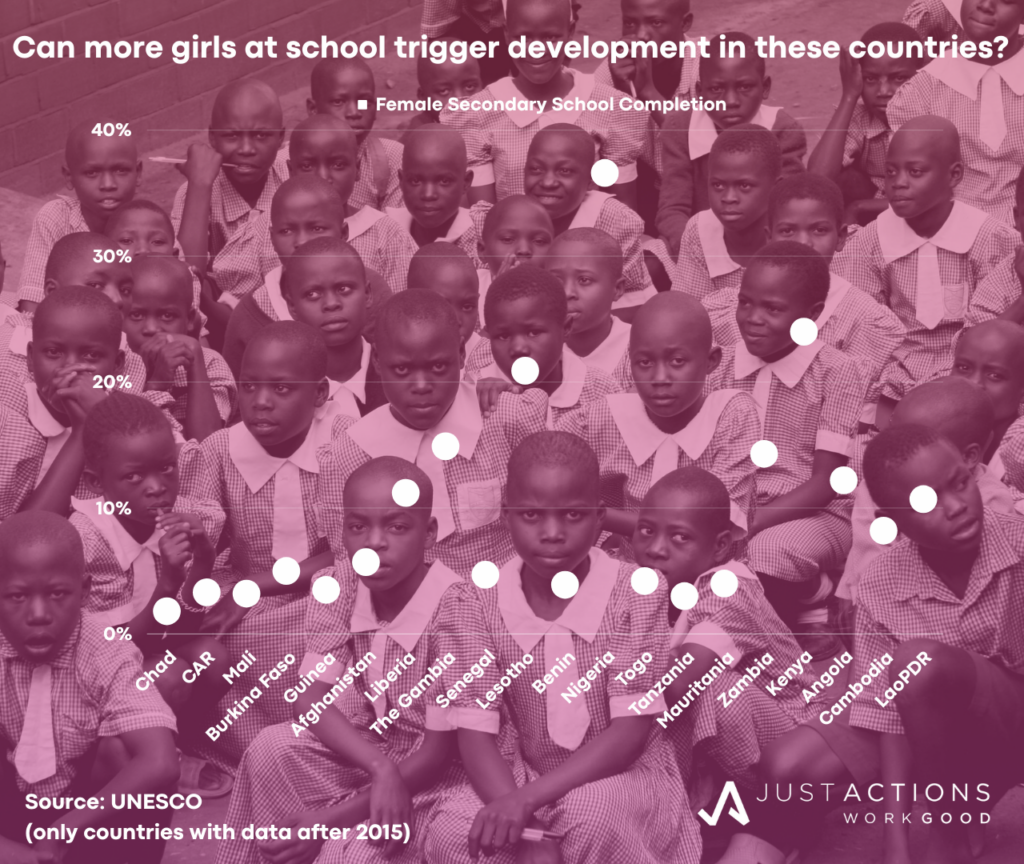Is mass education THE trigger for development?
How to explain the vast gaps in development between countries is ultimately a far less important question than how to close those gaps. Talk of magic bullets is met with derision in most development circles, but the evidence points to one investment alone as standing the best chance of triggering the much sort after leap forward.
Education. More specifically mass education; of the type that opens wide the doors to a secondary school education for all boys and critically, for all girls. Who knew that what happened in the schoolroom could be so disruptive to age-old family dynamics that undermine educational performance, health status, gender equality, and ultimately, economic growth?
Jack Caldwell did. His work in Africa and South Asia over the last five decades – a careful blend of demography and anthropology – revealed that when a child goes to school five fault lines appear in the family: (1) education reduces a child’s availability for “family” work, (2) education increases the cost of raising a child, (3) education raises the value of a child to society, (4) education speeds up cultural change, and (5) education introduces “middle class” values.
Together these five factors produce a seismic shift in the way children transfer wealth to their families. Caldwell described it as a reversal of the traditional intergenerational wealth transfer. Put simply, before schooling, wealth flows from child to extended family but after schooling wealth flows from family to child. The end result is that education exerts a profound impact on development through the restructuring of family relationships.
Following mass schooling, fertility declines as parents can no longer afford to educate large families. The children who receive an ever increasing share of family wealth grow up to become more educated and productive adults. New generations of more educated parents earn more and invest even more in their children and a virtual cycle of progress is unleashed. Caldwell concluded that it takes no more than two generations of mass schooling to trigger fertility declines which then drive periods of economic growth.
MASS EDUCATION OPENS THE DOOR TO DEVELOPMENT
And the rest is history, literally. In the United Kingdom mass education spurred by the extension of the vote in 1867 led to sharp declines in fertility and rapid economic growth. Between 1870 and 1930, British fertility dropped from five to two children and real GDP per capita more than doubled.
A century later investments in mass education underwrote the extraordinary development of countries like Sri Lanka and Costa Rica, and the State of Kerala in India. Caldwell argues that the dramatic improvements in health achieved by these countries were the result of a more educated public able to take advantage of new health information, products, and services.
But what about the countries still struggling to catch up in the development stakes, especially the twenty at the bottom of the Human Development Index, all but one in Sub-Saharan Africa?* If Caldwell is right, they should be prioritizing the new global goals for universal literacy and secondary school attendance – Sustainable Development Goal 4 – above others and investing heavily in mass education (see chart).
*Chad, Central African Republic, Mali, Burkina Faso, Guinea, Afghanistan, Liberia, Eritrea, The Gambia, Sudan, Senegal, Lesotho, Benin, Nigeria, Togo, Tanzania, Mauritania, Comoros, Zambia, and Kenya.
What kinds of policies and programs should countries pursuing mass education have?
They should consider: (1) publicly committing to 100% secondary school enrollment and literacy for all boys and girls irrespective of household income, (2) legislating mandatory secondary school attendance with penalties for non-compliance, (3) increasing government education spending per capita to the highest levels achieved by peer nations, (4) rewarding the bottom 40% of households for secondary school attendance and literacy gains through the tax and/or transfer systems, (5) ensuring that children from the bottom 40% of households have access to the same quality of education as their higher income peers, (6) ensuring that children from the bottom 40% of households have access to the same information about educational and career opportunities as their higher income peers, and (7) achieving 100% internet access for all secondary school students.
More than 40 years ago, Jack Caldwell predicted that the nature of the global society of the future would depend on the timing and pace of future fertility declines. Given the link between fertility decline and mass education he could just as easily have said that our future depends on how quickly our species is able to educate every one of its children to the same basic level.
Caldwell could not have foreseen the storm clouds of climate change and environmental degradation gathering on the horizon rendering his vision even more vital. But nor could he have foreseen the revolutions in technology and women’s empowerment that would put wind in the sails of the movement for mass education. The end result? There has never been greater urgency nor a better opportunity to harness education as the single most potent force for human progress.
This article is in honor of Jack Caldwell (1928-2016), legendary demographer who uncovered the connection between mass education, fertility decline, health gains, and human development.
Read more:
- Caldwell, J. 1980. Mass education as a determinant of the timing of fertility decline. Population and Development Review.
- Caldwell, J. 1982. The failure of theories of social and economic change to explain demographic change: puzzles of modernization or Westernization. Research in Population Economics.
- Caldwell, J. and P. McDonald 1982. The influence of maternal education on infant and child mortality: levels and causes. Health Policy and Education.
- Caldwell, J. 1986. Routes to low mortality in poor countries. Population and Development Review.
- Caldwell, J. 2005. On net inter-generational wealth flows: an update. Population and Development Review.
Updated January 2024



